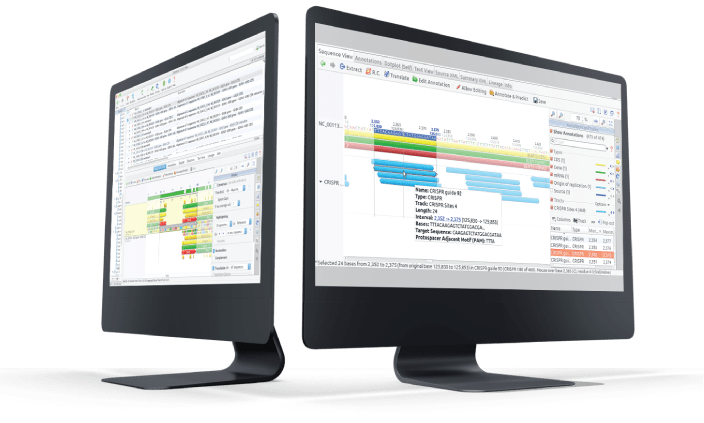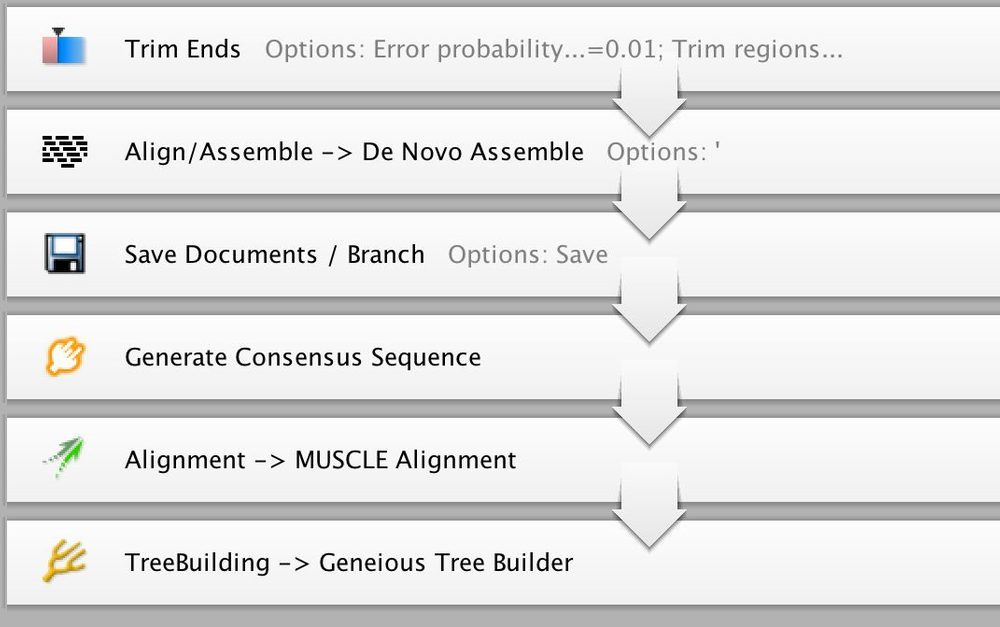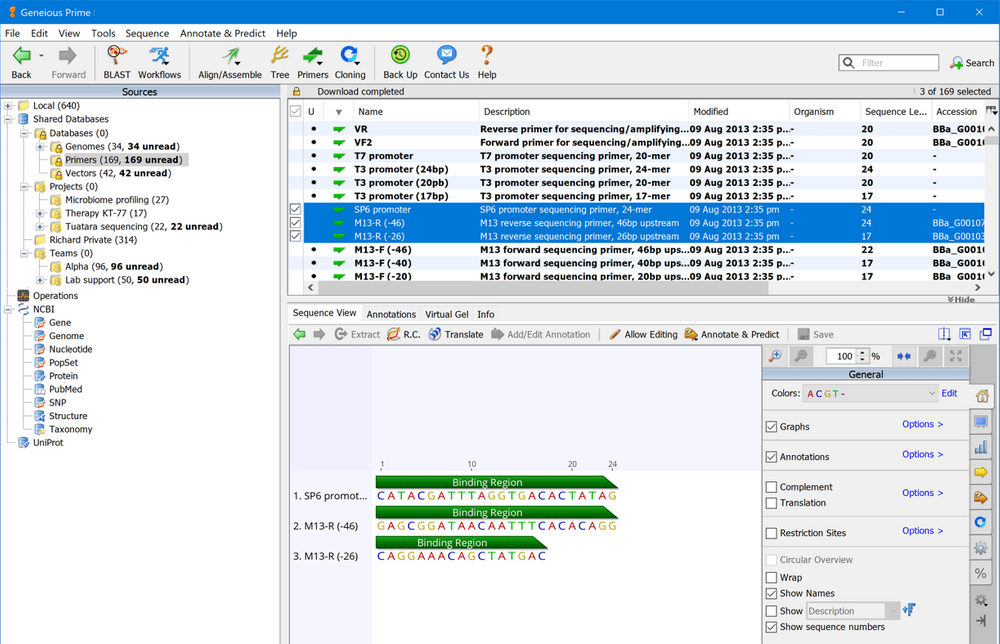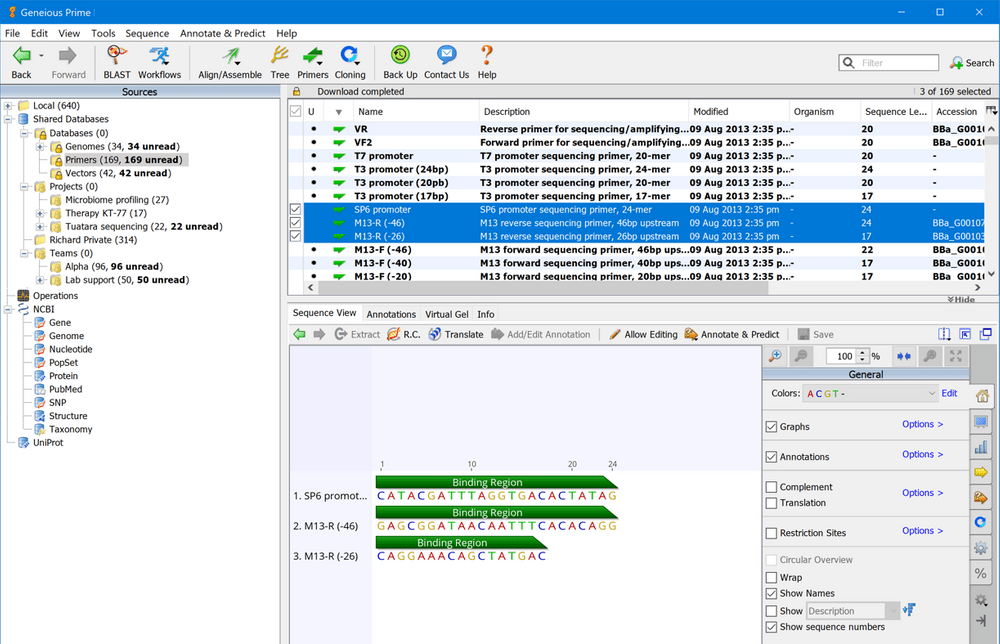Unlock the value of your sequence data
Sequence Analysis and Genomics
User-friendly, intuitive interface packed full of essential genomics tools for Sanger, NGS and long read sequence analysis, including pairwise and multiple alignments, de novo assembly, mapping, expression analysis, variant calling, NGS visualization, sequence and chromatogram analysis, automatic annotation, and phylogenetic tree building.
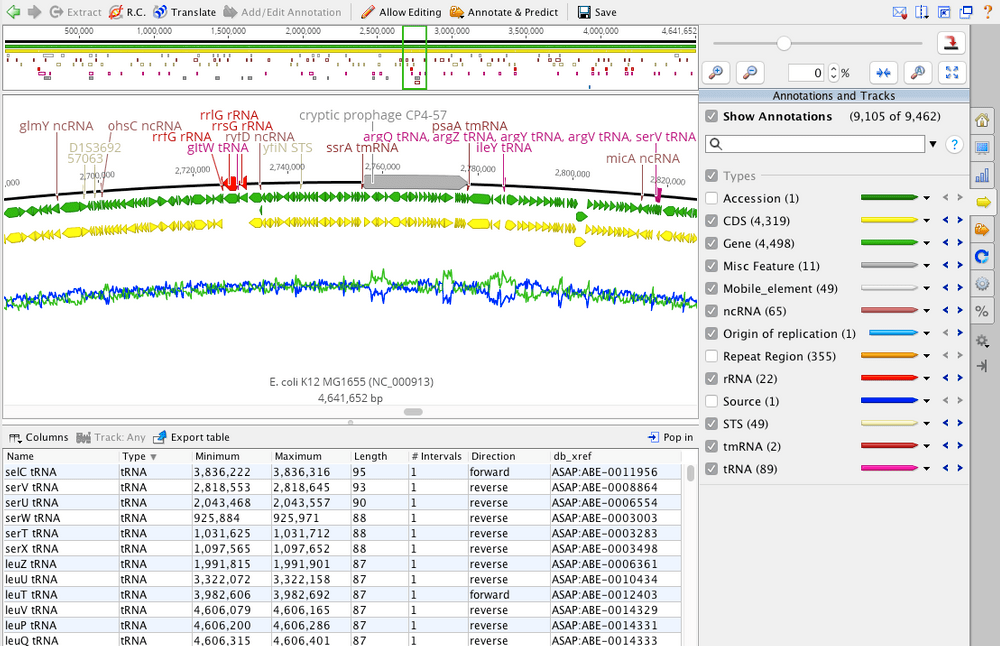
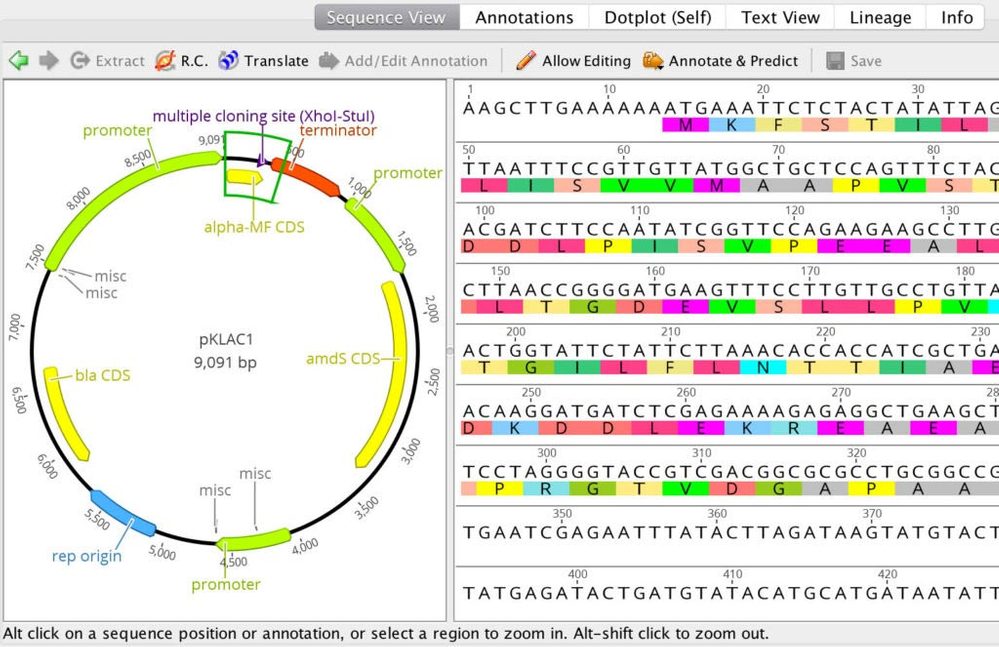
Molecular Biology
Perform a wide-range of cloning and primer design operations within one interface. Automatically annotate plasmid maps and expression vectors. Simulate a variety of molecular cloning operations including restriction cloning, Gibson Assembly, Gateway cloning and TOPO cloning. Design and test primers, find CRISPR sites, and optimize codons.
Data Management
Simply drag and drop to import, export and convert your sequences, annotations and notes in common file formats including Genbank, SnapGene, FASTQ, FASTA, BAM, VCF, GFF, or import your complete Vector NTI database. Arrange and browse your data library how you like with document filtering, batch renaming, and document history automatically saved. Available for Mac, Windows and Linux.
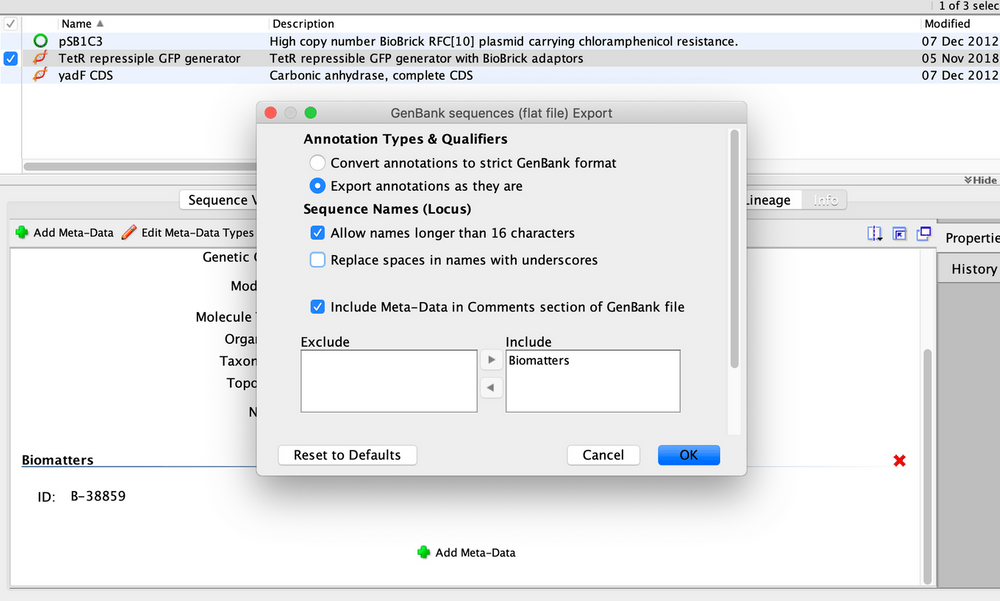
Automate
Create your own automated workflows or use in-built workflows to increase efficiency, control business processes, and reduce human error in your research. Connect directly to databases including UniProt, NCBI (Entrez), BLAST and PubMed. Databases searches can be automated, allowing you to continuously receive the latest information on genomes, sequences, and protein structures.
Collaborate
Transform data management across teams, increase process efficiency and improve collaboration with intuitive folder-based organization and a seamlessly integrated shared database. Geneious Server Database is also available to purchase with a greater level of control and increased security for data access for your organization over the standard shared database.


